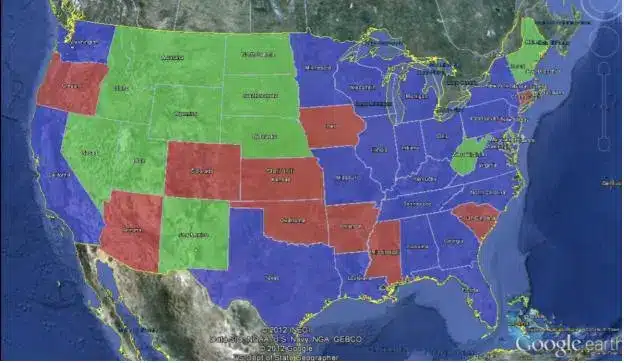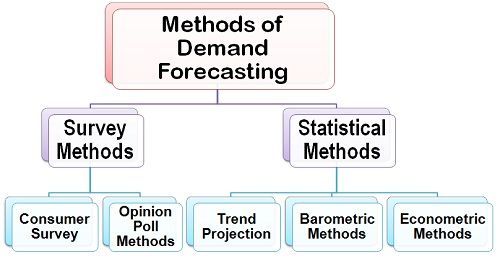Client Overview
Data Sleek recently worked with HyperWolf, a fast-growing cannabis delivery company based in Los Angeles, to optimize its delivery mechanisms. They operate in a competitive environment and know keeping delivery operations running smoothly is essential. This project culminated in the targeted application of Demand Forecasting, providing valuable insights for multi-region support. The overarching goal of our work was to help HyperWolf provide affordable products while minimizing time to delivery. This would be based on insights about consumption gleaned from historical data. The team at HyperWolf prides itself on getting orders to customer doorsteps as quickly as possible. One of the ways HyperWolf tries to accomplish its customer service mission is to anticipate needs. This way, they can fulfill orders quickly.

Collaborating to Implement a Demand Forecasting Model
Data Sleek’s team worked with HyperWolf to optimize the development of quantitative decisions about stocking inventory. The goal was to efficiently stock in Hyperwolf’s warehouse locations to suit geographically dispersed fulfillment needs. Data Sleek used an econometric approach, building demand forecasting methods to enhance heuristic insights about the data that HyperWolf’s team was already bringing to their analysis. We determined such conditions might also play into the decision-making model that HyperWolf would need. With this on hand, the demand forecasting process would also enhance that area of insight.
We also hoped to alleviate HyperWolf from the burdensome and time-consuming task of producing KML files by hand.
What is Demand Forecasting?
Demand forecasting is a process that allows data scientists and analysts to estimate the size of demand. This is done for some time in the future by using historical data. At a high level, this is done by looking at the interactions of overarching trends and repeating patterns. This predictive analysis helps companies decide how much inventory to keep in stock. Demand forecasting can also help plan for other considerations. Examples are marketing, human resources, expansion plans, and distribution. Demand forecasting is also helpful in detecting anomalies.
Trends at play may result from a growing or shrinking market, macroeconomics, or changes in brand awareness. Patterns are also important and tend to reflect cyclical rise and fall associated with seasons. Those seasonality patterns don’t have to be aligned with the year’s seasons. They can be observed in cycles over a day, a week, or a month. The kinds of patterns you observe in data over time will depend on the nature of the demand for the product. The demand forecast would take all of these patterns into consideration. This would also allow the company to work hand in hand with partnering manufacturers supplying the inventory.
Considering Patterns and Seasonality
Business-specific time series often have multi-period seasonality because that mirrors the patterns humans tend to operate with. For instance, the analysis of one product might be heavily influenced by a 5-day work week, which would be reflected in the time series data. Patterns related to another product might align more with vacation schedules or special events.
At its core, forecasting is a tool that helps business leaders to manage risk while capitalizing on opportunities.
HyperWolf’s Use-Case
Data Sleek’s work with HyperWolf was a multi-step process in which we helped them figure out the most efficient way to break down their geographic distribution regions. We helped them build a KNN model to address segmentation and then determine where those clusters observed in the model would be overlaid geographically.
As mentioned in the introduction, a time forecast aims to observe the changes of independent variables over time and how those independent variables impact a target variable. In this case, the target variable was sales volume. Our analysis was able to help this company not only to predict the volume of sales overall but also the volume of sales for each region. With that information, HyperWolf can make more informed decisions about how much inventory to stock for each region.
Opportunities for Growth
Before this analysis, the company had been making decisions about distributing stock manually and heuristically, which can be time-consuming. They saw an opportunity to make more data-informed decisions while collaborating with Data Sleek. This became increasingly important during HyperWolf’s growth in sales. They subsequently saw the need for more efficient business operations which they implemented programmatically. To support the growth they saw and to drive further business growth, HyperWolf sought dynamically generated KML regions for its drivers to maximize the business’s operation efficiency and profitability. Emphatically, this is a clear opportunity to differentiate themselves from the competition.

Data Sleek took a multistep approach to generating a dynamic and optimized geographic data file. First, we implemented data warehousing according to the client’s requirements, then pre-processed the resulting dataset. After that, we could geographically cluster historic order data using a K-Means clustering method, which allowed us to utilize a geospatial data package to allocate clustered regions on a grid map and form new KML regions. This resulted in a KML file based on the variables that made the most sense for this business use case. Finally, using Prophet, a forecasting model developed by Facebook, we generated a demand forecast for each region in the KML file.
This type of demand forecasting stands out as a method for observing demand forecasts because it operates based on a few assumptions. Notably, one of those assumptions is that there is an analyst in the loop. An expert in the operations at a specific business can interact with tunable hyperparameters that are human-interpretable. Retail businesses are often watching for trends related to sales and special events, which is incredibly straightforward to adjust by adding them manually.

Making Predictions Using Historical Data
Now, they have a better idea of how to break down their business into discrete geographic regions. Using this forecasting method, HyperWolf can now use its ever-growing bank of warehoused historical data to predict the number of sales in each region with the demand forecast, enabling business operations.
Most importantly, HyperWolf can predict sales volume by region several weeks in advance.
Alternate Applications
In addition to being able to plan for routine operations, HyperWolf can use those same demand forecasting methods to address other business challenges because Data Sleek helped them optimize their warehoused data.
An example of where HyperWolf could go on to apply demand forecasting is holiday sales. They may want to be able to predict that there will be a significant demand for their products and prepare for it in terms of staffing, inventory, and marketing plans.
Outcome Summary
By consulting with Data Sleek, HyperWolf was able to leverage Machine Learning. They synergistically increased the effectiveness of their expertise in the cannabis delivery market. Their expertise in this niche gives them an intuitive understanding of how they can tune the model’s human interpretable parameters. This offers more granular control over how they make future-forward and well-informed decisions as they grow.

Could Your Business Benefit From Demand Forecasting?
A similar approach could be used to optimize operations whether your company is focused on working within local economic conditions or running on a large, international scale.
If you’re ready to incorporate similar strategies in Data Science applications at your business, set up a meeting to consult with a Data Sleek pro today.


